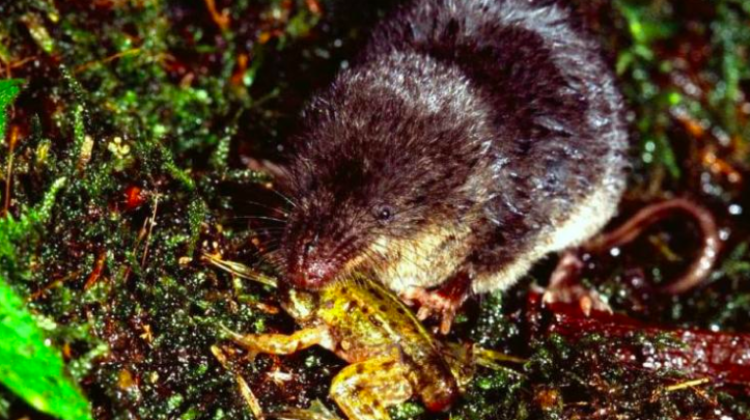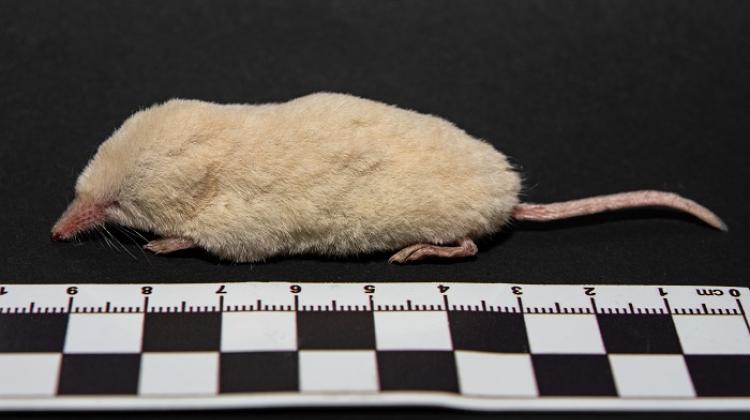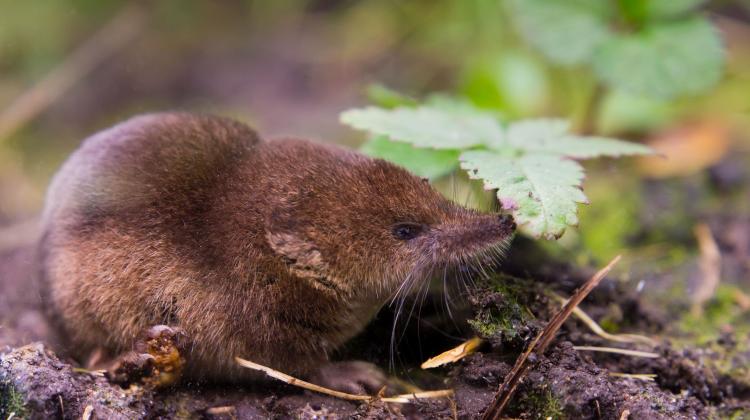We now know the composition of the venom of a small mammal. It lives in Poland!
 Source: Adam Mickiewicz University
Source: Adam Mickiewicz University
The Eurasian water shrew is a small, venomous shrew, found also in Poland. The composition of this animal`s venom has been determined by biologists from Adam Mickiewicz University in Poznań. The results of their study were presented in the Journal of Mammalogy.
The Eurasian water shrew is a relative of a better known common shrew. This small mammal is thoroughly at home in the water. It preys on insect larvae, tadpoles, small fish and snails. It also hunts on land. This inconspicuous mammal (it measures less than 10 cm) is not as vulnerable as it might seem. It`s venomous saliva allows the water shrew to paralyse its prey (often quite large compared to its own size, for example a small frog).
The role and composition of the water shrew`s venom were investigated by Krzysztof Kowalski and Leszek Rychlik from the Department of Systematic Zoology of the Institute of Environmental Biology, Faculty of Biology, Adam Mickiewicz University in Poznań.
In order to determine the effectiveness of the venom of this species, the scientists made a series of experiments that consisted in observing the water shrew hunting preys of various sizes. "As it turns out, unlike another representative of this species - common shrew, the water shrew is able to overpower its prey more effectively" - emphasizes one of the authors of the publication, Krzysztof Kowalski, in the materials sent to PAP.
"We noted a significant decrease in nerve impulse conduction speed after applying water shrew venom to the sciatic nerve of a frog. Similarly, venom application to the frog`s calf muscle caused a significant decrease in muscle contraction force. This results confirm that water shrew venom has strong paralysing properties" - adds Kowalski.
Scientists from Poznań were the first to determine the composition of water shrew venom. They determined that it contained hyaluronidase, lysozyme c and phospholipase A2. The latter compound occurs in snake venom and is responsible for its strong toxic properties.
According to Krzysztof Kowalski, the results of this study may be the starting point for the development of new medicines and the use of applying water shrew venom in medicine.
Detailed information about the study is available at: https://academic.oup.com/jmammal/advance-article-abstract/doi/10.1093/jmammal/gyy013/4911419?redirectedFrom=fulltext
PAP - Science in Poland
zan/ ekr/ kap/
tr. RL
Przed dodaniem komentarza prosimy o zapoznanie z Regulaminem forum serwisu Nauka w Polsce.


















